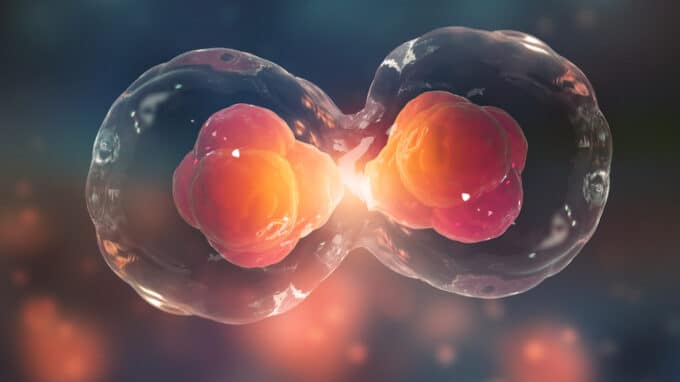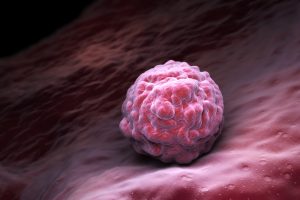The beginning of life is shrouded in mystery. While the complicated dynamics of mitosis in the so-called somatic cells – the cells that have a specialized function, such as skin and muscle cells – are well understood, it remains elusive in the first cells of our body, the embryonic cells. Embryonic mitosis is notoriously difficult to study in vertebrates because live functional analysis and imaging of experimental embryos is technically limited, making it difficult to track cells during embryogenesis.
However, researchers from the Department of Cell Division Dynamics at the Okinawa Institute of Science and Technology (OIST), together with Professors Toshiya Nishimura from Hokkaido University (formerly at Nagoya University), Minoru Tanaka from Nagoya University, Satoshi Ansai from Tohoku University (currently at Kyoto University) and Masato T. Kanemaki from the National Institute of Genetics, recently published a paper in Nature Communications. The study is an important first step towards answering questions about embryonic mitosis, thanks to a combination of novel imaging techniques, CRISPR/Cas9 genome editing technology, an advanced protein knockdown system and the Japanese rice fish (Oryzias latipes). The time-lapse images they produced help answer fundamental questions about the intricate process of uniform chromosome division during embryonic mitosis, while also revealing the next frontiers of scientific exploration.
What Happens During Embryonic Mitosis
At the heart of the mystery of embryonic mitosis is the crucial step in which the chromosomes, which contain all of the cell’s genetic information, align and divide evenly into daughter cells. A key role in this process is played by the mitotic spindle, which consists of microtubules – long protein fibers used for intracellular structure and transport – radiating from opposite poles of the spindle and attached to the chromosomes in the middle. The spindle properly captures duplicated chromosomes and distributes them evenly to the daughter cells during division. There are many factors that determine spindle formation, and one of them is the protein Ran-GTP, which plays an essential role in cell division of female reproductive cells, which lack centrosomes – cell organelles responsible for microtubule assembly – but not in small somatic cells, which have centrosomes. However, it has long been unclear whether Ran-GTP is required for spindle formation in early vertebrate embryos, which contain centrosomes but have unique features such as larger cell size.
In contrast to early mammalian embryos, fish embryonic cells are transparent and develop synchronously in a uniform, single-cell layer, which greatly facilitates their tracking. The medaka proved to be particularly suitable for the researchers as these fish tolerate a wide range of temperatures, produce eggs daily and have a relatively small genome. The temperature tolerance means that the medaka embryonic cells can survive at room temperature, making them particularly suitable for long time-lapse recordings. The fact that medaka frequently produce eggs and have a relatively small genome makes them good candidates for CRISPR/Cas9-mediated genome editing. Using this technology, researchers have created genetically modified or transgenic medaka whose embryonic cells literally highlight the dynamics of certain proteins involved in mitosis.
By studying the time-lapse of the developing mitotic spindle in living transgenic medaka embryos, the researchers discovered that large early embryos build unique spindles that are distinct from somatic spindles. Furthermore, Ran-GTP plays a crucial role in spindle formation in early embryonic stages, while its importance decreases in later embryonic stages. This may be due to the spindle structure being remodeled as cells become smaller during development, but the exact reason for this is the subject of future research.
The researchers also discovered that the early embryonic cells do not have a specialized spindle assembly checkpoint, characteristic of most somatic cells, which ensures that chromosomes are properly aligned before segregation. As Professor Kiyomitsu suspects, “the checkpoint is not active, and yet the chromosome segregations are very accurate. This could be due to the fact that embryonic cells have to divide very quickly, but this is something we want to investigate further”.
Diagnosis and Treatment of Human Infertility
While the genetic modification of the medaka fish and the study of early embryos have led to important new insights into embryonic mitosis, this is just the beginning for Professor Kiyomitsu and the team. In addition to questions about the diminishing role of Ran-GTP at later stages and the lack of a checkpoint for spindle formation, he points to the satisfactory symmetry of cell divisions in the time-lapse images: Spindle formation is characterized by a high degree of symmetry, as the cells appear to divide in the sizes and defined directions and the spindle is always in the middle of the cells. How can the spindle orient itself so regularly across the cells, and how does it manage to find the center every time?
Beyond time-lapse, the team hopes to further solidify this new foundation with additional medaka gene lines to serve as models for embryonic cell research, while optimizing the genome editing process. Ultimately, the team hopes to test the generalizability of their findings by studying embryonic mitosis in other organisms and, at a later stage, explore the evolution of spindle assembly and embryonic divisions, which would also contribute to a better understanding of human embryogenesis and the development of diagnosis and treatment of human infertility. With this work, the researchers have created a solid foundation, but also opened up a new frontier. According to the experts, embryonic mitosis is beautiful, mysterious and difficult to study, and they hope that their work will bring them a step closer to understanding the complicated processes at the beginning of life.




